By Esther Han
It doesn't make honey, live in a hive or have yellow stripes, but the unassuming Australian masked bee holds the key to disrupting the trillion-dollar global plastics industry.
A biotech start-up company has found the solitary masked bee's cellophane-like nesting material is not only water-repellent, as expected, but also resistant to flames, high temperatures and strong chemicals.
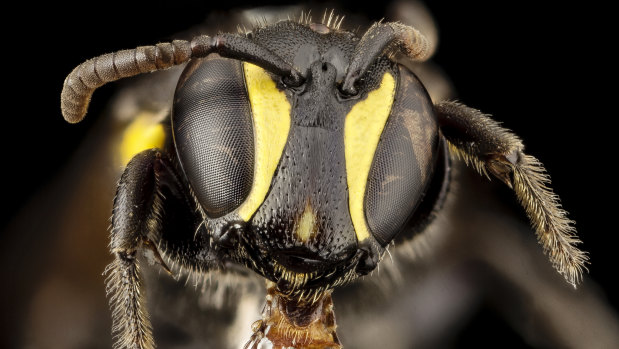
The Australian masked bee, from the Hylaeus genus, is a solitary bee that makes cellophane-like nesting material for its young.Credit: USGS Bee Inventory and Monitoring Lab
Humble Bee, based in New Zealand, is now in the process of reverse-engineering the nesting material in a bid to manufacture a biodegradable alternative to plastic on a large scale and at a competitive price.
"Plastic particles and chemicals have permeated ecosystems and organisms around the world, [from] foetal blood of babies [to] the most remote arctic lakes; it's so pervasive, it's terrifying," its founder Veronica Harwood-Stevenson said.
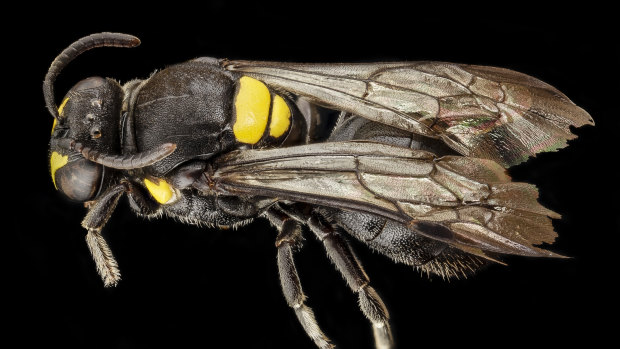
The Australian masked bee is about one centimetre long and has a small yellow badge on its back.Credit: USGS Bee Inventory and Monitoring Lab
"There are many types of plastics and we're looking at one type, but what we're working on has useful industrial properties ... and I believe it has applications in multiple industries."
It all began when Ms Harwood-Stevenson came across a throwaway line in a research paper about how a species of solitary bee's nesting material was "cellophane-like" and had potential to be a bioplastic.
Struggling to find enough "hylaeus" bees in New Zealand, she ventured to Noosa, Queensland, where she met Chris Fuller of Kin Kin Native Bees who by coincidence had just figured out a way to trap nest bees from the same family using special wooden blocks.
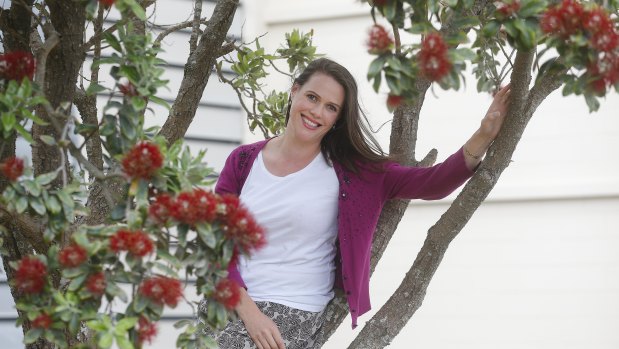
Veronica Harwood-Stevenson is the founder and CEO of Humble Bee, an early stage biotech startup in New Zealand.Credit: Kevin Stent
Convinced she was on to something, she ploughed her house deposit and prize money from Wellington Regional Economic Development Agency's Bright Ideas Challenge into research, which confirmed the lining's plastic-like properties.
In Wellington, which is solidifying its reputation as a strong start-up hub, Ms Harwood-Stevenson is now working with Victoria University's Ferrier Research Institute to study the bees.
"We’re at an early stage, but we’re working on some manufacturing techniques," she said.
"It's about biomimicry, about copying what's in the natural environment, and we've been doing it in design for centuries, from plane wing design inspired by birds of prey to train shapes reflecting bird beaks."
Humble Bee secured $NZ160,000 ($147,000) in the first investment round, and is aiming for $NZ500,000 in the second. It's backed by Sparkbox, Go Global Day One, and NZVIF.
It's also been promised up to $NZ120,000 from New Zealand government agency Callaghan Innovation.
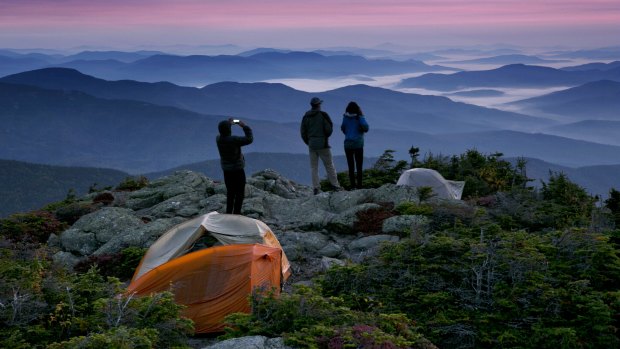
Humble Bee's first target is the outdoor gear and apparel market, which uses harmful chemicals to make products waterproof.Credit: AP
"Outdoor apparel is definitely what we’re most interested in because of the chemicals being used and because chances are, if you like the environment, you don't want the products you enjoy to be screwing up the environment," she said.
"I started talking to these companies really early on. I knew there was interest."
Two years ago, Greenpeace said its tests showed toxic chemicals were widely present in a range of outdoor gear, from tents to shoes. The chemicals were used to add waterproof and dirt-repellent finishes.
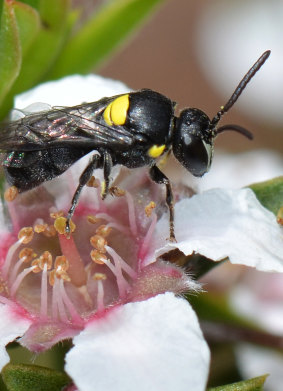
An Australian hylaeus bee.Credit: Flickr
"We want it to be suitable for a number of large industrial applications, from textiles to healthcare and beyond," she said.
Ultimately, Humble Bee wants to reduce plastic waste. However, Ms Harwood-Stevenson recognises that plastic is useful for some products – for example, electronics and certain medical equipment.
Mr Fuller, who provides a pollination service to macadamia growers, said when Ms Harwood-Stevenson contacted him about her project, he leapt at the chance to help.
"It fits my ethos, reducing toxins in the environment is hugely important," he said. "The reason I also got into pest control was to help farmers reduce their insecticide use."
Australia's plastics industry said it supported all efforts to reduce waste and improve environmental outcomes.
“Research and development in bioplastics is being pursued by multinationals through to start-ups [so] we are expecting to see a lot more activity in this space," Peter Bury, Chemistry Australia's innovation director, said.
“The history of the development of polymers is full of disruption and innovation. New materials will continue to replace older materials, where improvements and better outcomes are achieved."
The author travelled to Wellington as a guest of WREDA.
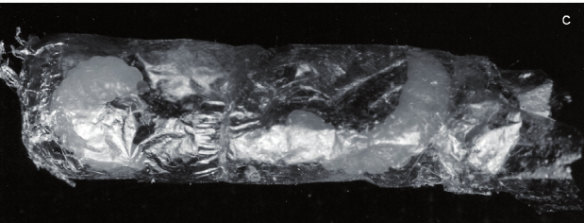
The hylaeus bee's nesting material looks like cellophane.Credit: William Nye